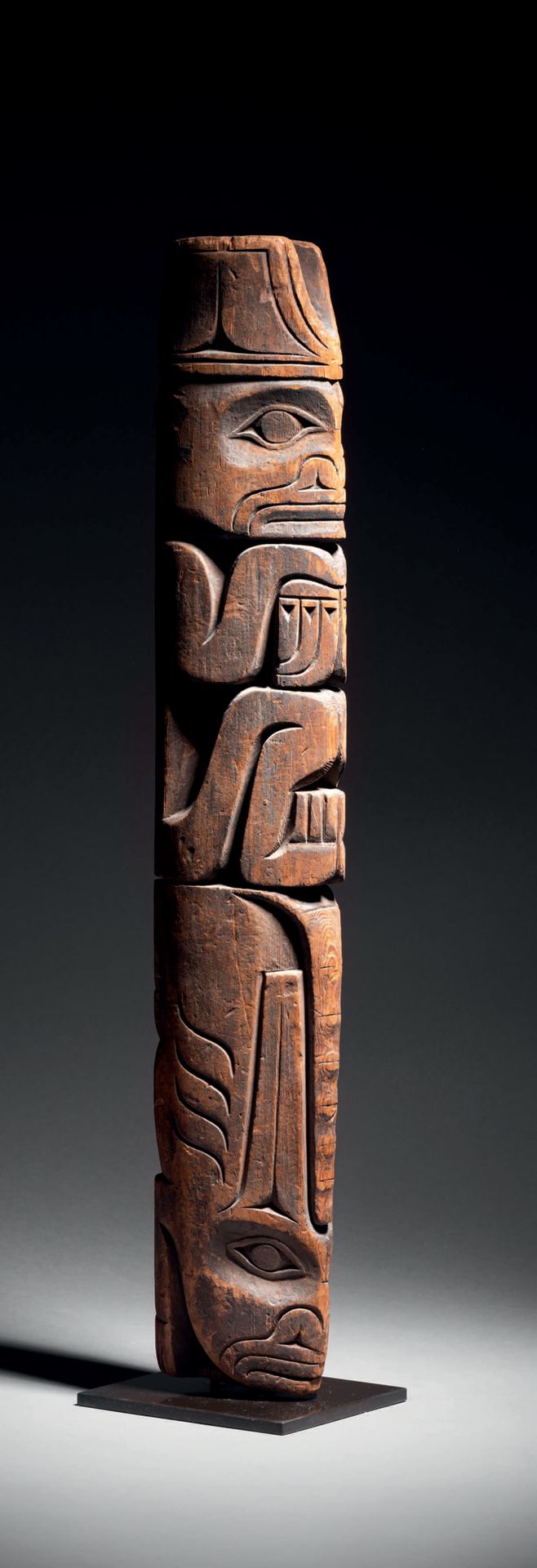Description
Totem pole, British Columbia, Canada Early 20th century Carved wood H. 57 cm Model totem pole, Northwest Coast, Canada H. 22 ½ in Provenance: - French private collection The sculpture shown here is a miniature representation of a heraldic pole ("totem"). It features a seated figure surmounting the head of a second spirit-guide. Monumental poles, found all along the Northwest Coast of Canada and as far south as Alaska, symbolize the origins, wealth and prestige of a family clan. Their iconography traces the lineage of a clan or honours important figures such as historical leaders or shamans. According to Steven C. Brown (in Native Visions, Evolution in Northwest Coast art from the 18th through the 20th Century, Seattle Art Museum page 101), "between 1865 and 1929, [following depopulation caused by epidemics and acculturation] those who carried the knowledge and wisdom of esoteric traditions did their best to keep these visions alive, both in objects used in traditional settings and in those intended for trade in developing colonial economies. The tradition of monumental sculptures was abandoned, and sculptors miniaturized their works, creating reproductions of houses, or, as here, models of heraldic poles.
12
Totem pole, British Columbia, Canada Early 20th century Carved wood H. 57 cm Model totem pole, Northwest Coast, Canada H. 22 ½ in Provenance: - French private collection The sculpture shown here is a miniature representation of a heraldic pole ("totem"). It features a seated figure surmounting the head of a second spirit-guide. Monumental poles, found all along the Northwest Coast of Canada and as far south as Alaska, symbolize the origins, wealth and prestige of a family clan. Their iconography traces the lineage of a clan or honours important figures such as historical leaders or shamans. According to Steven C. Brown (in Native Visions, Evolution in Northwest Coast art from the 18th through the 20th Century, Seattle Art Museum page 101), "between 1865 and 1929, [following depopulation caused by epidemics and acculturation] those who carried the knowledge and wisdom of esoteric traditions did their best to keep these visions alive, both in objects used in traditional settings and in those intended for trade in developing colonial economies. The tradition of monumental sculptures was abandoned, and sculptors miniaturized their works, creating reproductions of houses, or, as here, models of heraldic poles.
